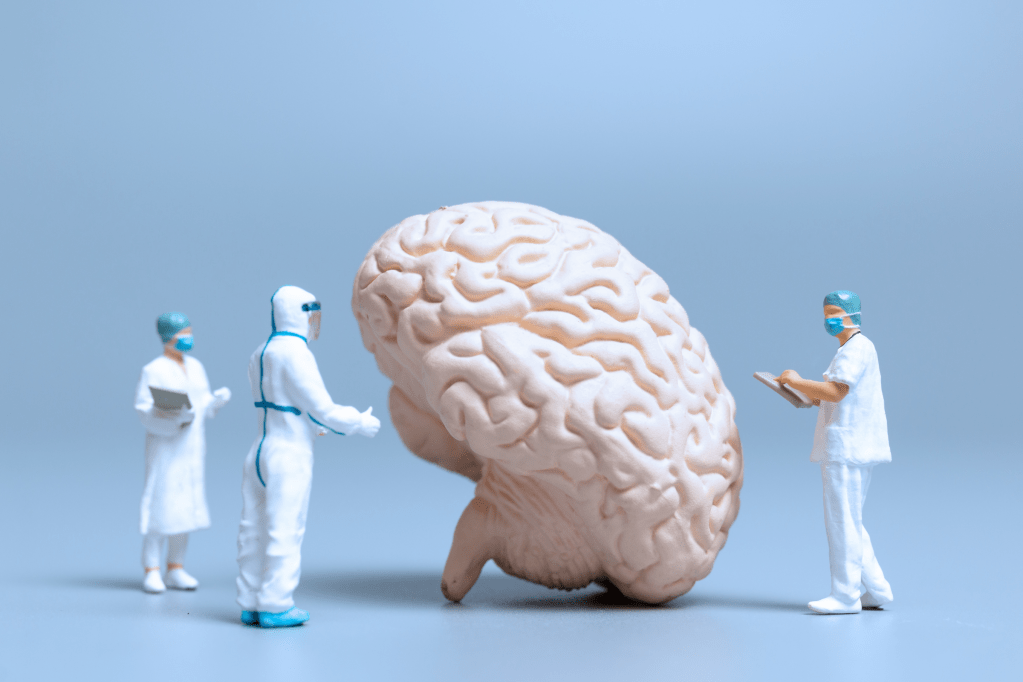
In California, 690,000 people aged 65 and older are living with Alzheimer’s, a degenerative brain disease and the most common form of dementia. In the United States, 5.8 million people aged 65 and older live with Alzheimer’s disease. Alzheimer’s affects memory, thinking and behavior and symptoms eventually grow in severity to interfere with daily tasks.
There is no cure for Alzheimer’s, which is why Rutgers scientists are examining human brain cells in mice to identify a pivotal mechanism that could result in a potential therapy for the disease. In a recent study, the Rutgers team found more clear-cut evidence of how the destructive proteins linked to Alzheimer’s disease attack human brain cells and destroy surrounding tissue.
The researchers studied human brain immune cells injected into the brains of specially bred immunodeficient mice, creating what they called a human-mouse chimera. The researchers detailed what happened to specialized immune brain cells known as microglia after those cells were exposed to tau proteins—destructive substances believed to be involved in Alzheimer’s and other severe human brain diseases.
“This provided an unprecedented opportunity to investigate the role of human microglia in brains as well as the cognitive impairment seen in Alzheimer’s Disease and Down syndrome, a genetic disorder with a high risk of developing Alzheimer’s disease,” said Peng Jiang, an associate professor in the Department of Cell Biology and Neuroscience at the Rutgers School of Arts and Sciences.
By studying the process in the newly-developed brain—which allowed human cells to grow, develop and mature with appropriate functions—the scientists were able to witness and analyze a cellular brain attack that has been largely elusive up to this point.
In autopsies, scientists have been able to study the brains of people who died from Alzheimer’s and have seen residues of tau proteins and cellular changes. The human-mouse brain chimera has allowed the Rutgers team to extract and see human cells in the actual process of deterioration.
The mice in the study were specially bred to be immunodeficient so that they could receive implanted human cells without rejecting them due to normal immune defenses. The immunodeficient mice were injected with human microglial cells and, later, with tau proteins, which are linked to the development of the brain disease.
“Since microglial cells are one of the first cell responders when something goes wrong in the brain, we believe the changes we saw to be significant,” said Mengmeng Jin, a postdoctoral researcher in the Department of Cell Biology and Neuroscience at Rutgers and first author on the study.
The California Institute for Regenerative Medicine (CIRM) is committed to investing at least $1.5 billion—more than double what CIRM funded between 2006 and 2020—in treatments that target conditions affecting the brain and central nervous system (CNS), including Alzheimer’s.
Read the source release about the study here.
Mice and humans have evolutionary conserved brains meaning they have very similar brain architecture made up of similar types of brain cells. Hence, mice are idea subjects for neuroscientis who don’t have the ability to peer into living human brain. Microglial cells are the most prominent immune cells of the CNS. They are first to respond when something goes wrong in the brain. They regulate brain development primary through 2 routes : the release of diffusible factors and phagocytosis. Brain of human and mice do not proses similar types of antigen presentation molecules. It is interesting to investigate the molecular markers interplay to have prolong effect and cripple of microglial function. Evidence established that IFNAR endocytisis as an active contributor to the regulation of signal tranduction trigger by IFN binding to the IFNAR. However, DS microglial exhibit an enhanced synaptic pruning function, cellular senescent and elevated type 1 interferon signaling. Therefore, the determination of downstream regulator play roles to develop defective microglial from oversignaling of type 1 interferon may provide important insight of treatment for brain diseases.